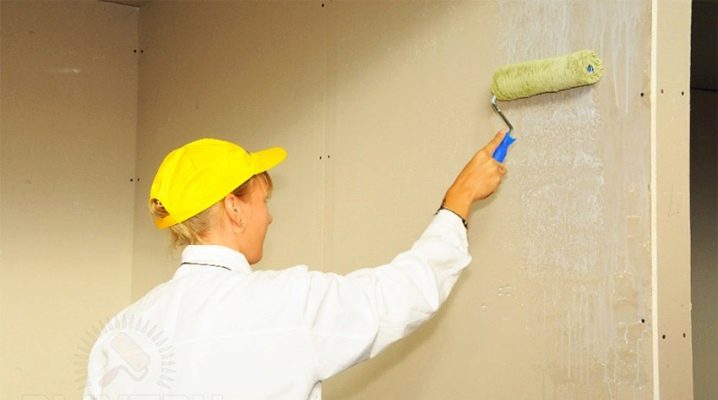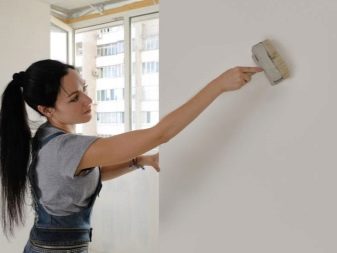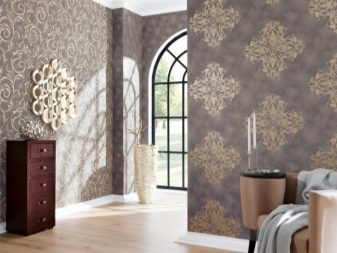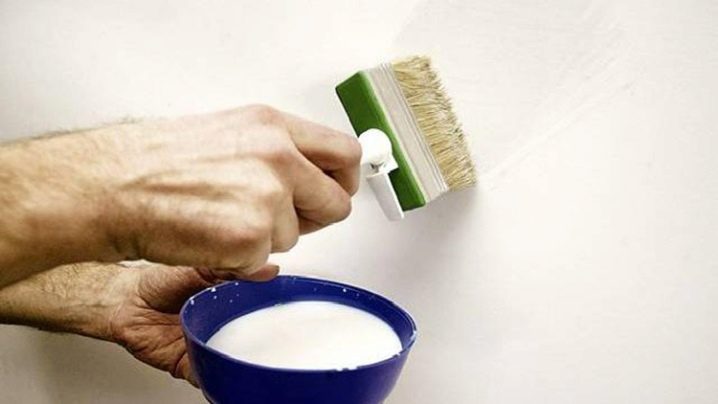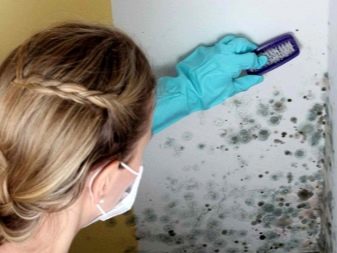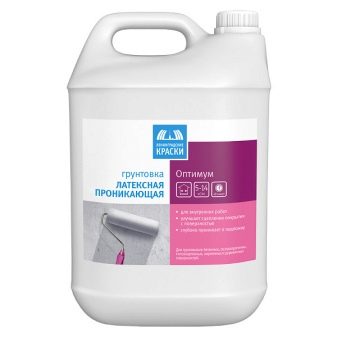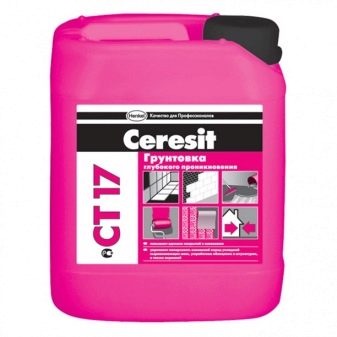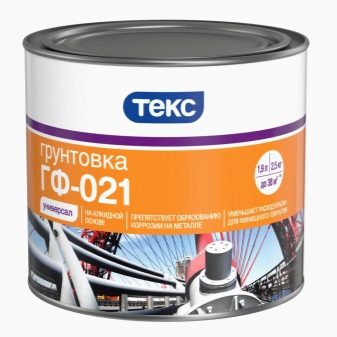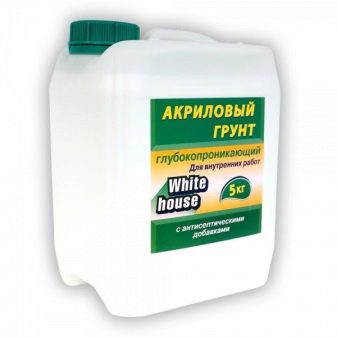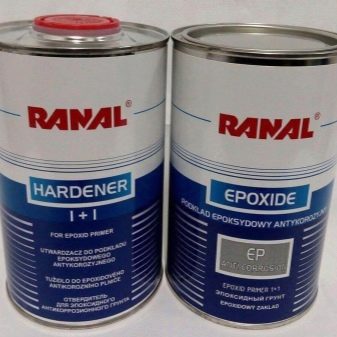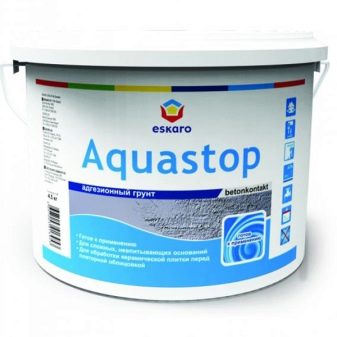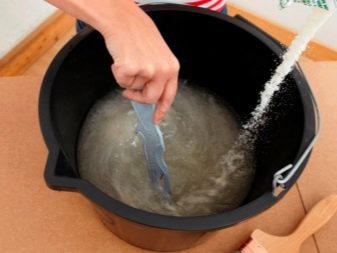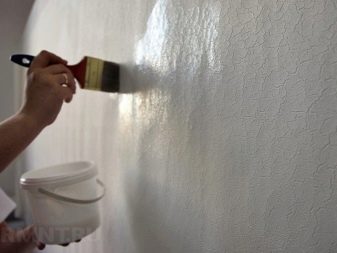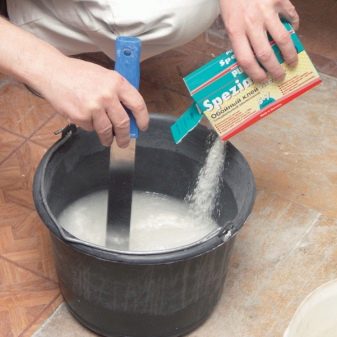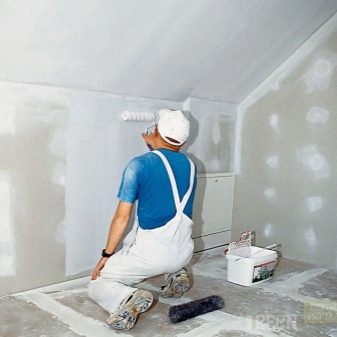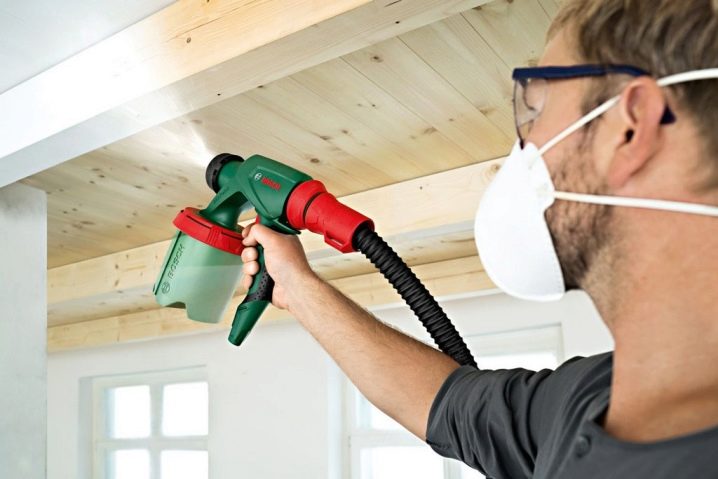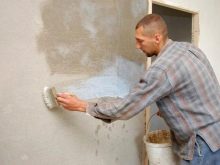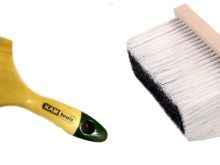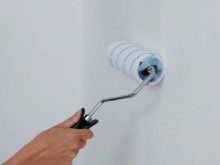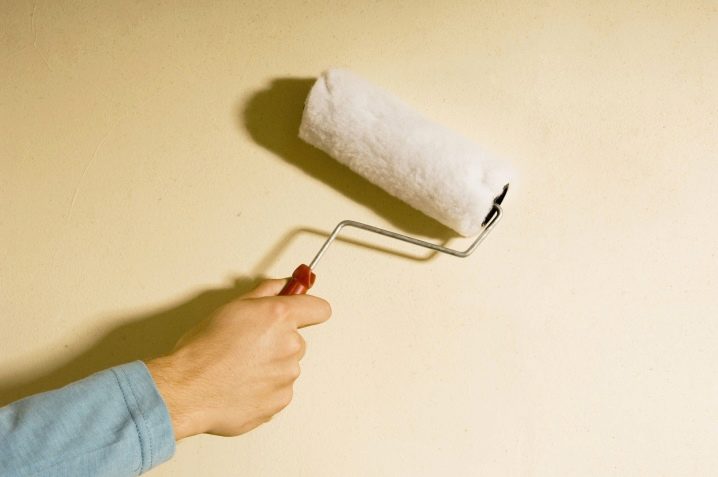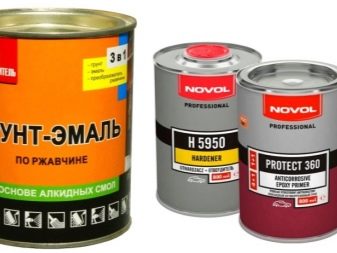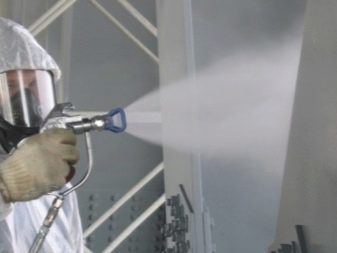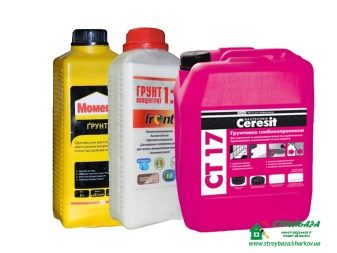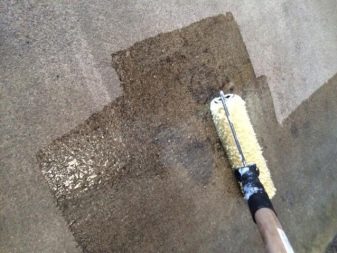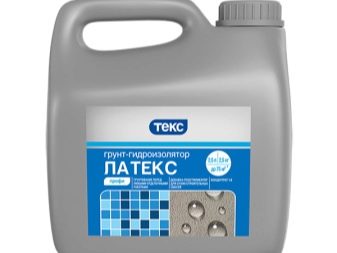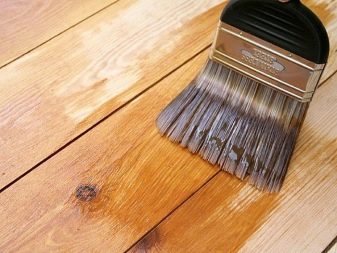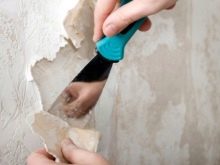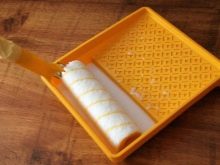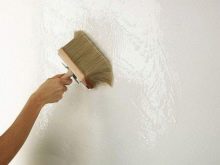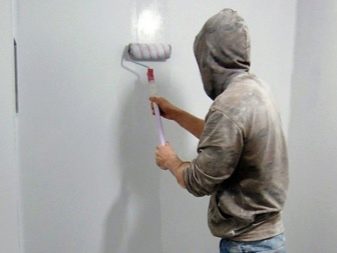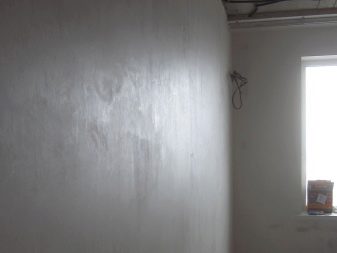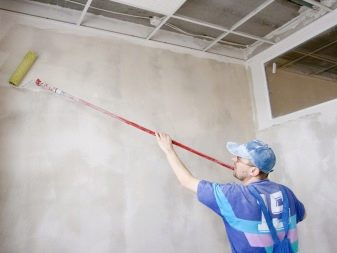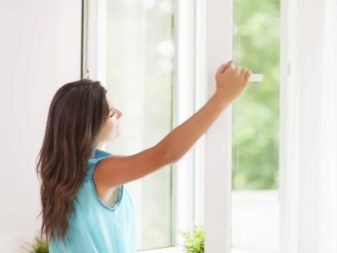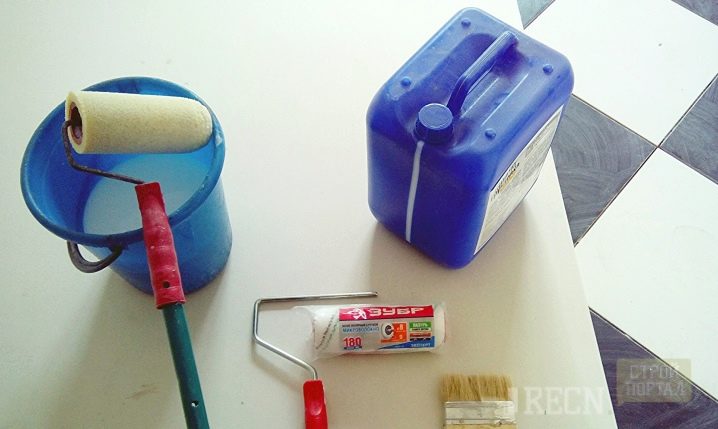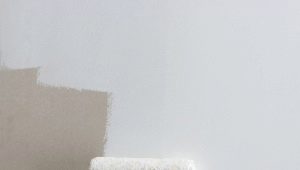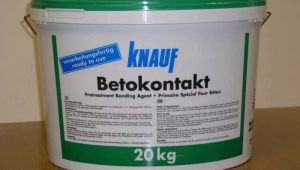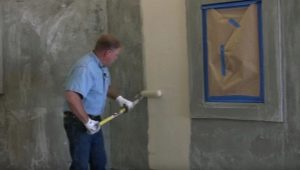How to primer the walls before sticking wallpaper?
Surface priming is an essential measure before any kind of decorative finish. To make a quality repair, you should familiarize yourself with how to ground the walls before painting, tiling and wallpapering.
Special features
The primer does not allow the appearance of various stains on the surface, eliminates the shedding and cracking of the base. Also, the use of this material can significantly reduce the cost of glue, which is required for pasting wallpaper.
Priming has some features that should be read.
- Before working process it is necessary to process a surface, having removed the previous covering. Remove the old wallpaper, remove the remnants of glue.
- To facilitate the process of removing coatings, you can pre-moisten the wallpaper with water and wait until they absorb moisture.Remove the old glue from the walls using special tools that are sold in any hardware store.
- It is strongly not recommended to apply the soil on the walls that have just been repaired. If you have treated the surface with putty, wait until the material is completely dry.
- Before using the primer, it is necessary to remove the fungus and mold from the walls.
Ignoring these rules will lead to the fact that the wallpaper will quickly peel off from the surface, and the mold will multiply and spoil the entire look of the room.
Kinds
Almost every soil mixture is a white liquid. In a separate category there are paints and primers in which the white color can be tinted. Some manufacturers offer ready-made mixtures with colored pigment. For roughing it is necessary to use a deep penetration solution. Acrylic or contact mixture is also available.
You can use the latex primer. It differs from other solutions in that it is able to penetrate into the material to a depth of 10 mm. So ground walls are processed several times. Each layer must be applied after the previous one is completely dry.
In order to avoid mistakes, experts recommend to comply with the technical requirements that each manufacturer indicates on the packaging of its products.
The remaining types of soil are selected on the basis of wallpaper material. All species are divided into several categories.
- Acrylic primer. This type of mortar is used for intermediate measures on the old surface: concrete, plaster, brick, stone, wood and gypsum plasterboard. You can also apply this material to putty. The mixture dries after 35 hours. Soil can be used in residential areas, as it does not have an unpleasant odor.
- Primer based on alkyd resins. This material is acquired for work with wooden and metal surfaces, as it has anti-corrosion properties.
- Glyphthalic Primer Used only on metal walls. After you have processed the surface of these materials, further work can be done no sooner than after 24 hours.
- Perchlorvinyl Solutions Suitable for mineral and metal base.Experts do not recommend the use of such material for interior work. The coating dries quickly, due to this is in great demand.
- Primers with gluein which polyvinyl acetate is present. Such solutions should be used in the event that the decorative coating will have the same composition. This solution has a fast polymerization time of 30 minutes.
- Polystyrene primer can be used when applied to wood and plaster. Among the ingredients are organic solvents, so you can not use the material in a residential area.
- Phenolic primer serves for processing wood and metal.
- Epoxy solution can be used when working with metal or concrete.
Primers are further subdivided into liquid and dry. The first option involves applying a ready-made solution to the surface. Crumbly composition must be diluted with water independently.
If you have chosen glue for priming, make sure that the mixture packaging contains information that the product is intended for these jobs. If there is no such inscription on the box, it means that glue can be used only for pasting wallpaper. In some cases, you can use this option, but it will not be able to guarantee the quality that you get with an acrylic primer.
Experts do not recommend saving on a primer for your home, and you should not try to create a similar composition on your own, as there are already ready-made options on offer, with which you can make high-quality repairs for many years.
How to mix?
Primer - inexpensive material for finishing, which is in wide demand. However, for processing the walls before sticking wallpaper you need a large amount of the mixture. Before work, the mixture should be diluted with water, according to the manufacturer's instructions.
Each manufacturer indicates on the package the necessary amount of water that will be required in order to dilute the primer. The average rate is 1 part water to 2 parts soil. The mixed solution can be stored no more than 12 hours, because the important properties of the composition are gradually lost. When applied to plaster, the mixture is not recommended to be diluted, as the cement-sand composition has the ability to absorb moisture.
To make a quality repair, you should strictly follow the instructions, as incorrect mixing will cause the primer to not perform the tasks and you need to redo all the work again.
What to apply?
To prime the surface of the walls before pasting the wallpaper, you will need to decide on the type of tool with which you will apply the mixture. Someone applies the solution by hand, someone likes to use the spray gun.
It is beneficial to use the sprayer, as it saves time. However, if you choose this method, provide the ceiling and the floor with sufficient protection, as small drops of soil that are sprayed from the spray gun can settle on other surfaces.
For manual work, you can use a roller or maklovitsy. A paint brush will be required to coat difficult to reach areas and corners. Her pile is also able to penetrate deep holes or under pipes. Treat this tool to areas around outlets, switches, and other small parts.The operation of the brush is accompanied by some inconveniences that are laborious, since the tool can capture only a small area of the work area.
There are two types of brushes: radiator and flat. The first is for the delicate application of the composition around small elements. The other can be used for the rest of the wall.
Many people prefer to use a roller. It is able to simultaneously process a large portion of the base, which reduces the time spent on repairs. With this tool you can apply a primer in a thin and uniform layer. After it, the solution does not form stains and excess savings. Despite the convenience, the roller is not suitable for processing areas with grooves.
Subtleties of drawing on various surfaces
Before sticking wallpaper on drywall should be applied primer. This is a mandatory event, which ensures the adhesion of the future material to the wall, and also protects the surface from the appearance of harmful fungi. Acrylic primer is suitable for drywall. If you chose a concentrated solution, before diluting it with water you need to read the instructions. To avoid unnecessary trouble with diluting the primer, you can purchase ready-made composition.
If you are glueing wallpaper on the metal, then for such a case developed special types of solutions.
- To ensure the impermeability of moisture emit an insulating primer. Alkyd and epoxy mixtures correspond to these parameters. This primer covers the surface with a protective film, preventing the occurrence of metal corrosion. Such properties of the composition provides chromate and phosphate, which are in the list of ingredients of the solution.
- Phosphate based primers are used for ferrous and non-ferrous metals. The soil contains two components: a base and an acid diluent. These components can improve adhesion.
- Primers designed to remove rust. In such compositions, orthophosphoric acid is present, which makes it possible to dissolve the corrosion centers. It forms on the surface of metal walls a protective layer that takes care of the state of the base.
When priming concrete, it is important to maintain air ventilation and at the same time create an insulating layer. An epoxy-based primer meets these requirements.
Good waterproofing will be required for bases that are located in rooms with a high level of humidity. To do this, use a water-based primer. Particular attention should be paid to old concrete planes. For this type of surface, a deep penetration primer with a reinforcement function is used.
For processing wood, you need to choose the mixture very correctly. It should reduce the flammability of the material and improve adhesion to the future coating. The first layer is applied in order to fill the cracks of the material. It is recommended to apply the second layer if the wall is very porous. The choice should be stopped on the insulating type without hot additional drying.
Apply a primer in any case, regardless of what surface you are going to treat: the ceiling, walls or floor. Also, do not forget about the priming of slopes, to eliminate the appearance of mold there.
Recently, more and more people are using latex-based compounds, they create an elastic film on the surface and are resistant to moisture, which is also important when finishing.Use this composition if the treated room has a high level of humidity.
The process of priming any type of surface goes through several stages.
- Surface preparation before application. First, carry out the cleaning of the plane, getting rid of dust, dirt, excess debris, which will affect the outcome of the work.
- The mixture is poured into a plastic container. The roller is coated with the tool, then several movements are made on the ribbed surface of the pallet to get rid of excess material from the tool.
- The mixture should be applied in a thin layer. The newcomers have a mistaken opinion that the layer should be thicker.
- Using a brush, the corners are processed in places where the roller does not pass.
- After finishing the surface, it is necessary to dry.
How long does it dry?
Many buyers are interested in how long it takes to completely dry the primer. This information is indicated by the manufacturer on the packaging. Before buying, be sure to read the instructions to make a choice.
The minimum drying time for an acrylic primer is three hours.The process of polymerization of oil formulations takes 24 hours.
These rules apply if the premises in which the work is carried out have the necessary conditions. The temperature in the room should be 25 degrees. Humidity level is about 64%. If you can not provide these conditions, the period of polymerization is doubled.
Check the readiness of the surface can be by touch, but it is impossible to catch a little humidity, so it’s better to wait extra time. Work with a wet base is prohibited.
Useful recommendations
In order not to make mistakes when applying the soil, it is recommended to follow the advice of experts.
- The room must have optimal conditions. At temperatures from +16 to + 30, the drying speed will be quite fast.
- To dry faster, you need to reduce the humidity and increase the air temperature. To reduce the humidity, it is necessary to open the windows and ventilate the room. Under the influence of air, water molecules will evaporate faster. To increase the temperature, you can turn on the heater.
- You can use options with quick-drying composition.This primer envelops the surface with a thin film that allows the mixture to harden faster.
- If you work in natural light, start working with the wall on which the light falls at a sharp angle.
- When processing under artificial light, move the lamp as close as possible to the surface being treated.
- If you are priming wallpaper glue, do not dilute large amounts of material. This is due to the fact that the wallpaper glue dries quickly, and you may not have time to spend the entire mixture.
- Soil should be bought only from reputable manufacturers to avoid unpleasant consequences.
- On the shelves of the store often put the mixture under the name "primer under the wallpaper," such a substance resembles diluted glue of PVA. When choosing such a mixture, remember that the present composition has a higher cost than PVA.
- The most convenient way to knead the primer in a bucket. You can choose the composition that suits you the requirements and act on the instructions indicated on the package.
There is a wide choice of primers on the construction market, so you can implement any ideas and process various bases.There are mixtures with antiseptics and anti-corrosion, which will help eliminate surface defects.
When treating walls with primer, remember that walls must be dry and clean. This rule will allow you to eliminate errors and make a quality repair.
About what to primer the walls under the wallpaper, see the following video.
